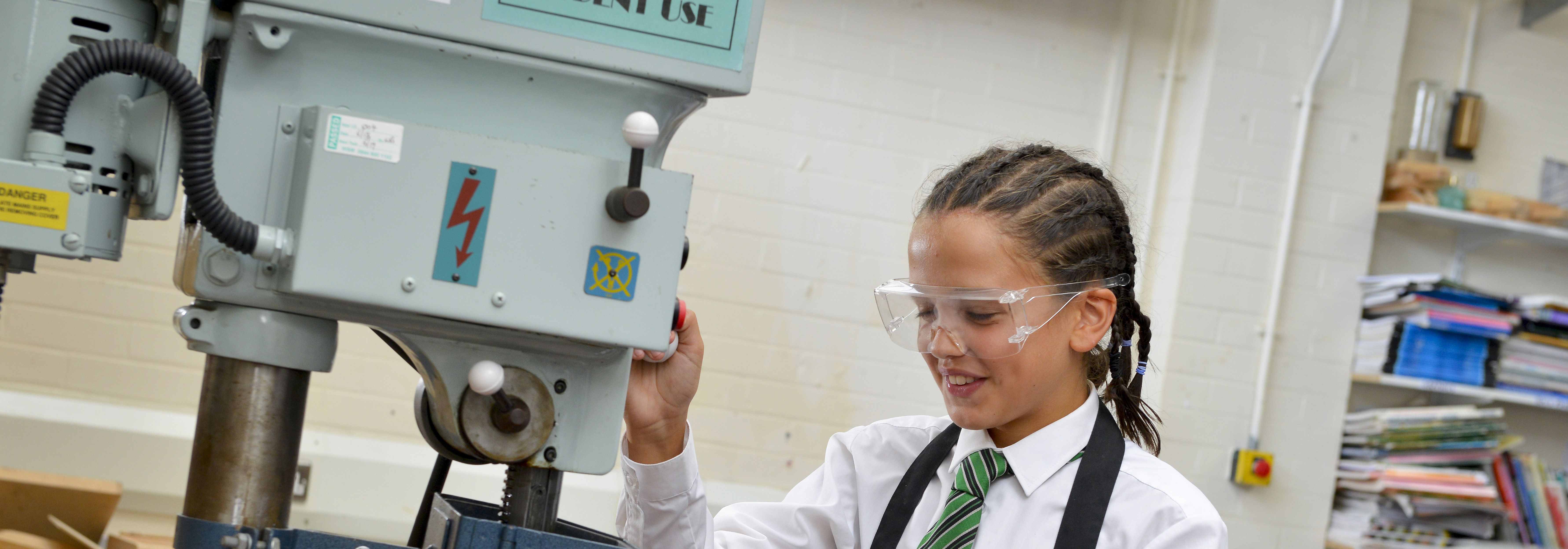|
Mains Electricity
- Mains electricity is an a.c. supply.
- In alternating current (a.c.) the movement of charge changes direction
- Direct current (d.c.) is the movement of charge in one direction only
- Cells and batteries supply direct current (d.c.)
- In the United Kingdom the domestic electricity supply has a frequency of 50 Hz and is about 230 V
- A switch or a fuse in an electrical circuit is always connected to the live wire so that the socket or appliance is not live when switched off
- If the switch or fuse is placed in the neutral wire, the electrical appliance is still connected to the high voltage live wire even when the switch is open, or the fuse is blown
- This could cause the user to get an electric shock if they touched the inside of the appliance
- Most electrical appliances are connected to the mains using a three-core cable
- The insulation covering each wire is colour coded for easy identification: live wire – brown, neutral wire – blue, earth wire – green and yellow stripes
- The live wire carries the 230 V alternating potential difference from the power supply to the appliance
- The neutral wire completes the circuit from the appliance back to the power supply
- The earth wire is a safety wire to stop the appliance becoming live by providing a path for a fault current to flow to earth. It also causes the protective device (either a circuit-breaker or fuse) to switch off the electric current to the circuit that has the fault
- The earth wire is not required to complete the circuit
- The potential difference between the live wire and earth (0 V) is about 230 V. The neutral wire is at, or close to, earth potential (0 V). The earth wire is at 0 V, it only carries a current if there is a fault.
- Some countries do not routinely include the earth wire as a safety feature in their plugs. This results in a 2-pin plug
- A fuse is a safety device that prevents a high current from flowing through the circuit
- A high current could damage the appliances and wiring
- A fuse is made of a substance with a very low melting point. When a high current flows through, this substance melts, breaking the circuit.
- A circuit breaker works in the same way as a fuse, except it can be reset with a switch
Power in Appliances
- Everyday electrical appliances are designed to bring about energy transfers
- The amount of energy an appliance transfers depends on how long the appliance is switched on for and the power of the appliance
- Different domestic appliances transfer energy from batteries or ac mains to the kinetic energy of electric motors or the energy of heating devices
- Power is the amount of energy transferred per unit time (rate at which energy is transferred), or the rate at which work is done
- The amount of energy transferred by electrical work can be calculated using the equation: Energy Transferred J=Power W x Time s

- This equation can be represented as: E = P x t
- Energy transferred, E, is measured in joules, J
- Power, P, is measured in Watts, W
- Time, t, is measured in seconds, s
- The power of an appliance can be calculated using the equation:
Power (W)=Energy Transferred (J)Time (s)
- Appliances have power ratings in watts (W, kW)
- The kilowatt hour (kWh) is used as a unit of energy for calculating electricity bills.
- Electricity meters measure the number of units of electricity used.
- The more units used, the greater the cost.
- In fuel bills, the cost of electricity can be calculated using the equation: Cost=Number of units used x Cost per uni
t
- Work is done when charge flows in a circuit
- The power in an electric circuit can be calculated using the equation: Power W=Current A x Potential Difference V
- This equation can be represented as P = I x V
- The power transfer in any circuit device is related to the potential difference across it and the current through it, and to the energy changes over time
- The amount of energy transferred by an electric circuit can be calculated using the equation: Energy Transferred J=Current A x Time s) x Potential Difference (V

- This equation can be represented as E = ItV
- There is a relationship between the power ratings for domestic electrical appliances and the changes in stored energy when they are in use
- Work is done when charge flows in a circuit
- The amount of energy transferred by electrical work can be calculated using the equation: energy transferred = charge flow × potential difference (E = QV)
- The amount of energy transferred by electrical work can also be calculated using the equation: Energy Transferred J=Potential Difference V x Charge Flow (C)

- This equation can be represented as E = VQ
The National Grid
- The National Grid is a system of cables and transformers linking power stations to consumers
- Electrical power is transferred from power stations to consumers using the National Grid
- Step-up transformers are used to increase the potential difference from the power station to the transmission cables then step-down transformers are used to decrease, to a much lower value, the potential difference for domestic use
- The National Grid system is an efficient way to transfer energy
- The potential difference or current in the coils of a transformer can be calculated using the equation: Potential Difference across secondary coil Vx current in secondary coil A=Potential Difference across primary coil V x current in primary coil (A)

- This equation can be represented as VsIs= VpIp
Energy Resources
- The main energy resources available for use on Earth include fossil fuels (coal, oil and gas), nuclear fuel, biofuel, wind, hydroelectricity, geothermal, the tides, the Sun and water waves
- A renewable energy resource is one that is being (or can be) replenished as it is used
- Some renewable resources can be replenished by human actions and some are replenished naturally
- A non-renewable energy resource is one that is not being (or can be) replenished as it is used
- Fossil fuels are non-renewable energy resources
- Examples of fossil fuels are coal, oil and natural gas
- Fossil fuels can be burnt to heat water, which produces steam. This steam can turn a turbine which powers a generator (generates electricity)
- The uses of energy resources include transport, electricity generation and heating
- Nuclear fuels release energy through nuclear reactions, which involve the breaking up of atomic nuclei
- Examples of nuclear fuels are uranium and plutonium
- The energy released through the nuclear reactions is used to heat water, which produces steam. This steam can turn a turbine which powers a generator (generates electricity)
- An advantage of fossil fuels is that they are reliable – they can always be used to generate energy. They also release lots of energy
- Disadvantages of fossil fuels are that they are non-renewable and burning them releases greenhouse gases which contribute to global warming
- Advantages of nuclear fuels are that they do not release greenhouse gases and they release lots of energy
- Disadvantages of nuclear fuels are that they are expensive to store and dispose of, and accidents carry a high risk to health
- Advantages of biofuels are that they are renewable and have low levels of harmful emissions
- A disadvantage of biofuels is that they require large areas of land to produce
- Advantages of wind energy are that it is renewable and doesn’t produce harmful emissions
- Disadvantages of wind energy include that the wind turbines look unattractive, they are noisy, they occasionally kill birds, and that it is unreliable (it’s not always windy)
- Advantages of hydroelectric energy are that it is renewable, it doesn’t produce harmful emissions and it’s reliable – it can be used to meet surges in demand
- Disadvantages of hydroelectric energy are that the dams are expensive to build, and they can damage local wildlife habitats
- Advantages of geothermal energy are that is renewable and doesn’t produce harmful emissions
- A disadvantage of geothermal is that it is expensive to drill far enough underground
- Advantages of tidal energy are that it is renewable, inexpensive to run, reliable and produces no harmful emissions
- A disadvantage of tidal energy is that it is expensive to build
- Advantages of solar energy are that it is renewable and has no harmful emissions
- Disadvantages of solar energy are that it is unreliable (as it’s not always sunny) and expensive to build
- Advantages of water wave energy are that it is reliable (as there are always waves), and no harmful emissions are produced
- Disadvantages of water wave energy are that it is expensive to build (lots are needed), and the equipment can be damaged by storms
Static Electricity
- When certain insulating materials are rubbed against each other they become electrically charged
- Negatively charged electrons are rubbed off one material and on to the other
- The material that gains electrons becomes negatively charged
- The material that loses electrons is left with an equal positive charge
- When two electrically charged objects are brought close together they exert a force on each other
- Two objects that carry the same type of charge repel
- Two objects that carry different types of charge attract
- Attraction and repulsion between two charged objects are examples of non-contact force
|
Disciplinary Knowledge
- Change the subject of an equation
- Interconvert units.
Practical Skills
- Safe use of appropriate apparatus to measure energy changes/ transfers and associated values such as work done
|

















